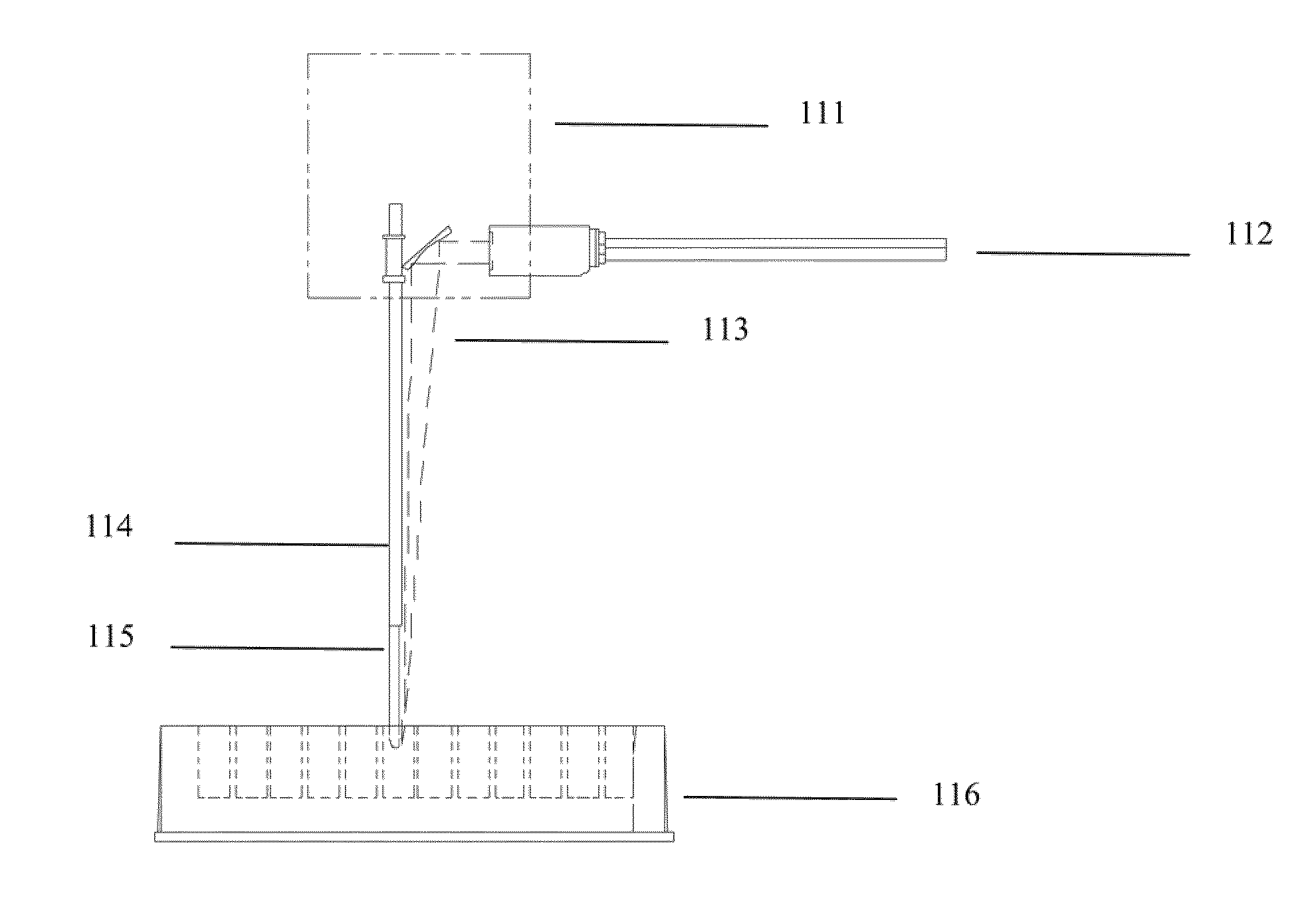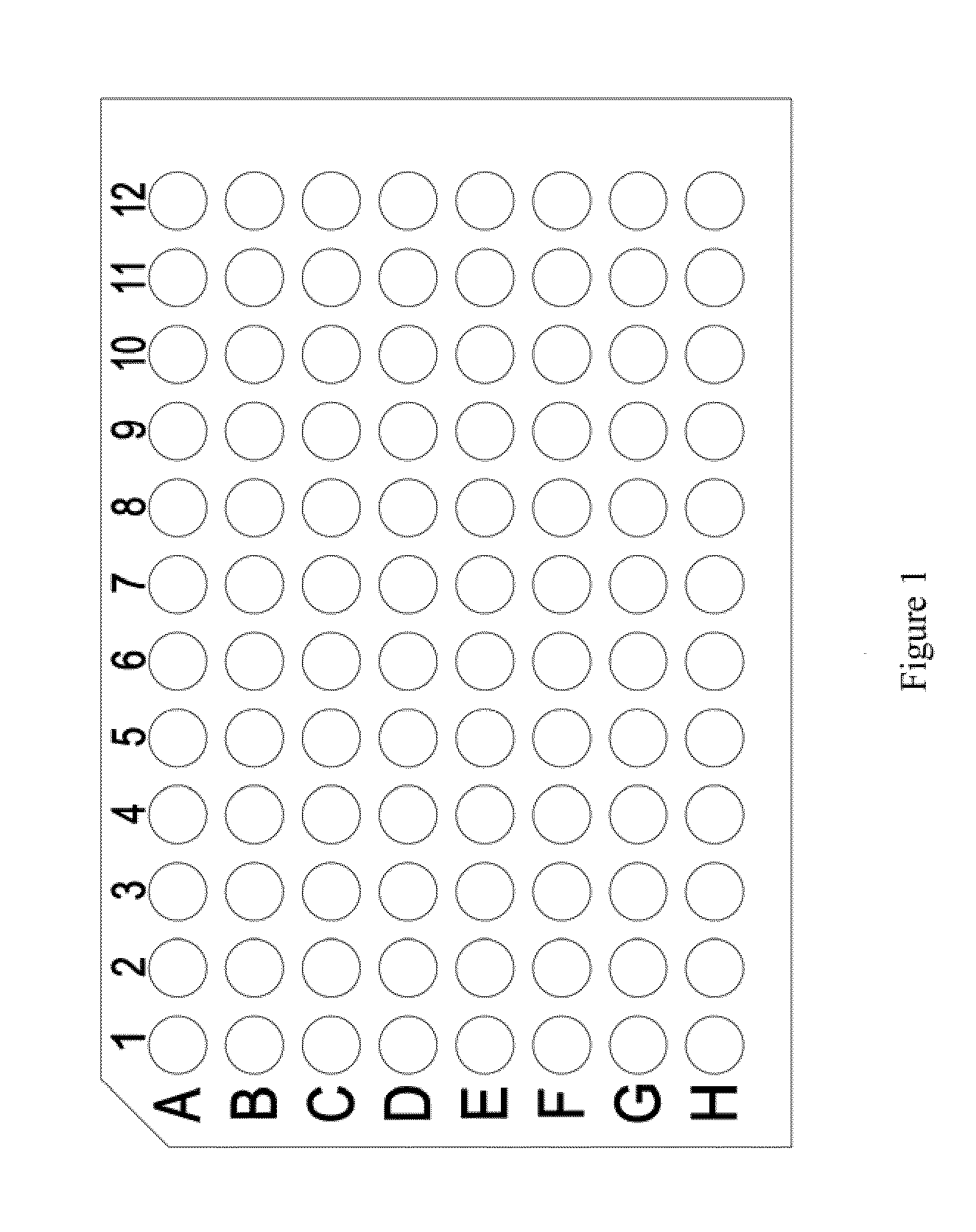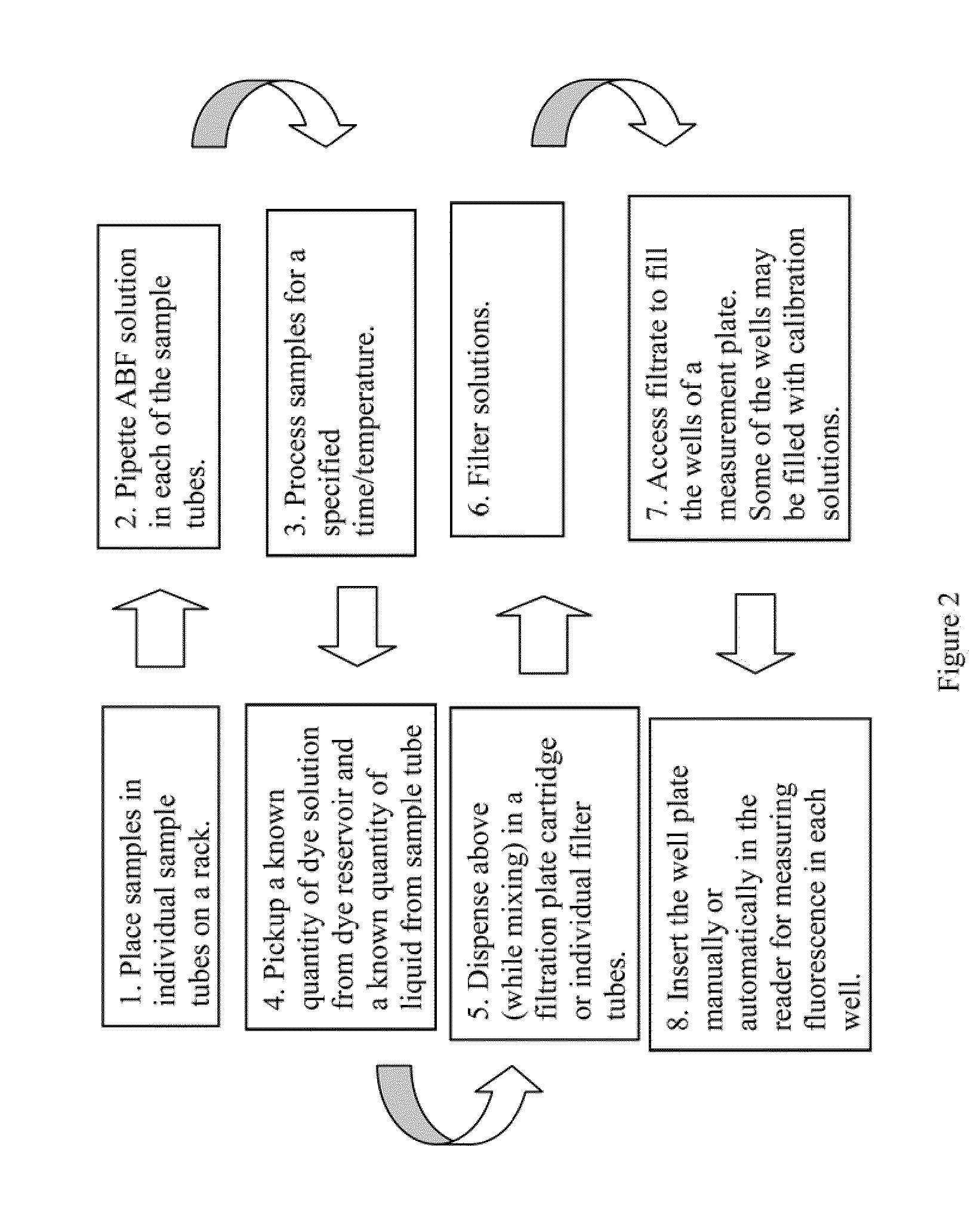High throughput methods for analysis of contamination in environmental samples
a technology of environmental samples and throughput, applied in the field of detection of contaminants in environmental and industrial hygiene samples, to achieve the effect of reducing cost, increasing efficiency, and high throughpu
- Summary
- Abstract
- Description
- Claims
- Application Information
AI Technical Summary
Benefits of technology
Problems solved by technology
Method used
Image
Examples
example 1
Treatment of Stainless Steel Probes for Increased Corrosion Resistance
Stainless steel needles and discs were exposed to 3 weight % ammonium bifluoride solution in water at both 25 and 90° C. The stainless needles were unprotected whereas the discs were coated with a protective material by Restek Performance Coatings (Pittsburgh, Pa.) namely Silosteel-CR. Silosteel-CR is a corrosion resistive layer that increases the lifetime of materials in acidic environments. The two forms of stainless steel were soaked in the ammonium bifluoride and their weight monitored with time. The results are summarized in Table 3. As seen in the table all samples did not do well and were corroded by ammonium bifluoride. At 90° C. the sample with Silosteel-CR layer lost 4 weight % and the soaking solutions turned green in color.
TABLE 3SoakingTime leftInitialFinalΔ%SampleTemp.soakingWeightWeightWeightWeightMaterial(° C.)(hrs)(g)(g)(g)lossCommentsStainlessRT1120.116260.113150.003112.7Needle is corroded,steel ...
example 2
Coating with Parylene to Improve Corrosion Resistance
Stainless Steel coupons were coated with Parylene using a vapor deposition process. The type of parlyene used was “C” and the coating thickness was 2.5 microns. The coatings were deposited to MIL-1-46058C specifications by Advanced Coating (Rancho Cucamonga, Calif.). The coupons were tested in 3 weight % ammonium bifluoride at 25 and 90° C. and after 48 hours showed a slight increase in their weight due to water uptake of the polymer coating. The results of the test are shown in Table 4 and show that after 48 hours the stainless steel coupons were completely protected from corrosion by the polymer coating. In all cases the soaking solution remained colorless.
TABLE 4Initial 48 hour SoakSample #Weight (g)Final Weight (g)25° C. SoakK442A0.197930.19797K442B0.20940.20945J8870.194080.19413K4620.409030.4090590° C. SoakK052B0.16340.16368K442B0.440110.4699J8870.187340.1909
example 3
Programming Routines for the HT Equipment to Analyze Beryllium in Samples by Optical Fluorescence Using Standard Methods
In order to automate the sample preparation and analysis of beryllium using NIOSH method 7704 and 9110 and ASTM D7202, we chose a robotic platform Janus™ from Perkin Elmer (Waltham, Mass.) and a plate reader from BioTek (Vinooski, Vt.) called Synergy 2™. We decided to write three independent routines. In the first routine (ABF Dispensing), ABF is dispensed in an array of sample vials. In the second routine (Calibration standard preparation), calibration solutions are prepared with different concentrations of beryllium from a stock solution. In the third routine (Plate preparation and analysis) the machine prepares a microwell (or multiwell) plate for measurement of beryllium and carries the plate over to the reader so that it can be read. These programs can be run in any order as desired by the user so that the user is able to optimize the use of time and resources...
PUM
| Property | Measurement | Unit |
|---|---|---|
| band width | aaaaa | aaaaa |
| band width | aaaaa | aaaaa |
| band width | aaaaa | aaaaa |
Abstract
Description
Claims
Application Information
 Login to View More
Login to View More - R&D
- Intellectual Property
- Life Sciences
- Materials
- Tech Scout
- Unparalleled Data Quality
- Higher Quality Content
- 60% Fewer Hallucinations
Browse by: Latest US Patents, China's latest patents, Technical Efficacy Thesaurus, Application Domain, Technology Topic, Popular Technical Reports.
© 2025 PatSnap. All rights reserved.Legal|Privacy policy|Modern Slavery Act Transparency Statement|Sitemap|About US| Contact US: help@patsnap.com



